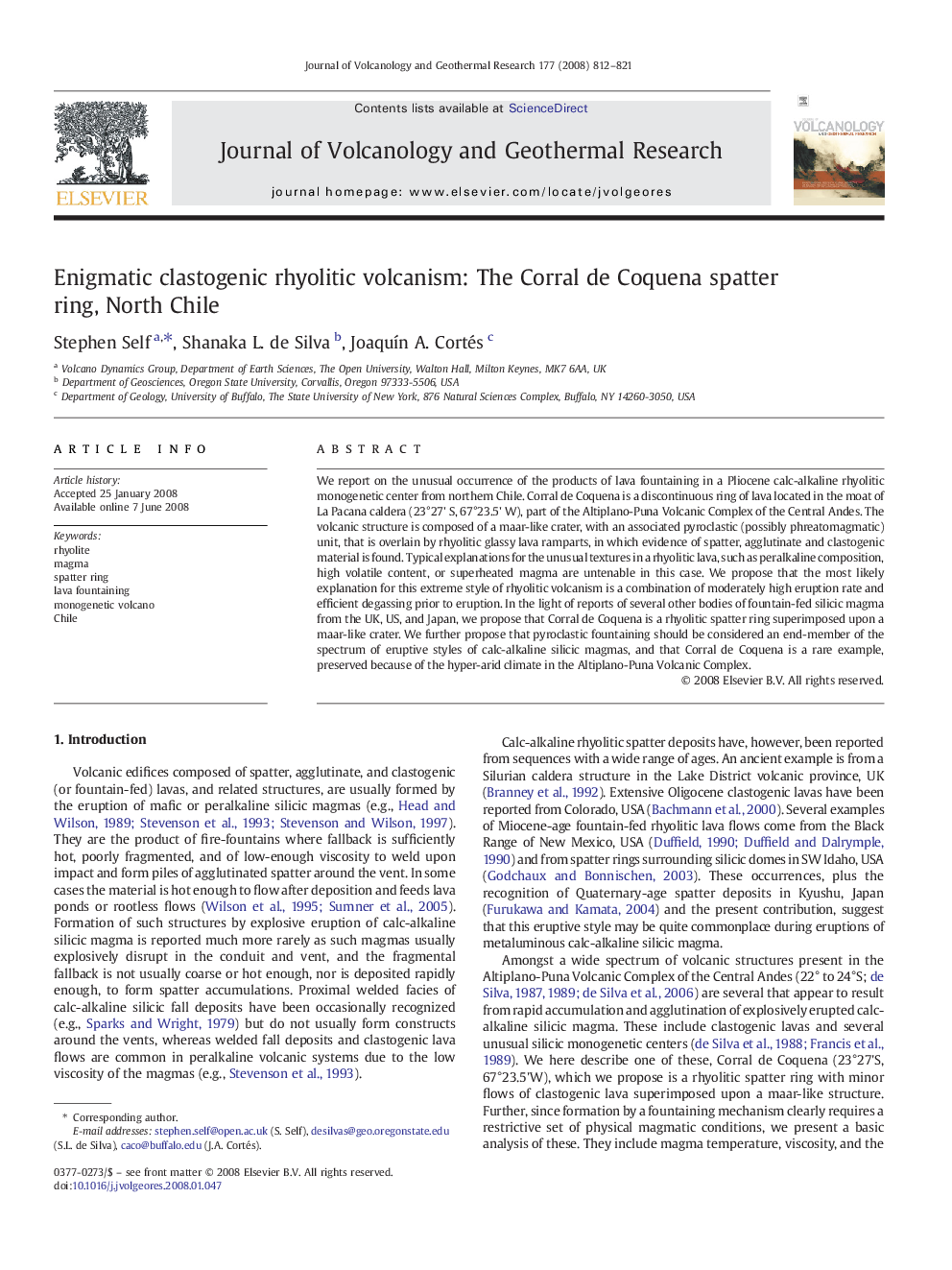| Article ID | Journal | Published Year | Pages | File Type |
|---|---|---|---|---|
| 4714567 | Journal of Volcanology and Geothermal Research | 2008 | 10 Pages |
We report on the unusual occurrence of the products of lava fountaining in a Pliocene calc-alkaline rhyolitic monogenetic center from northern Chile. Corral de Coquena is a discontinuous ring of lava located in the moat of La Pacana caldera (23°27' S, 67°23.5' W), part of the Altiplano-Puna Volcanic Complex of the Central Andes. The volcanic structure is composed of a maar-like crater, with an associated pyroclastic (possibly phreatomagmatic) unit, that is overlain by rhyolitic glassy lava ramparts, in which evidence of spatter, agglutinate and clastogenic material is found. Typical explanations for the unusual textures in a rhyolitic lava, such as peralkaline composition, high volatile content, or superheated magma are untenable in this case. We propose that the most likely explanation for this extreme style of rhyolitic volcanism is a combination of moderately high eruption rate and efficient degassing prior to eruption. In the light of reports of several other bodies of fountain-fed silicic magma from the UK, US, and Japan, we propose that Corral de Coquena is a rhyolitic spatter ring superimposed upon a maar-like crater. We further propose that pyroclastic fountaining should be considered an end-member of the spectrum of eruptive styles of calc-alkaline silicic magmas, and that Corral de Coquena is a rare example, preserved because of the hyper-arid climate in the Altiplano-Puna Volcanic Complex.
